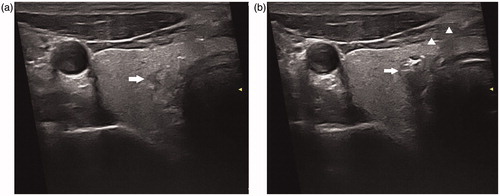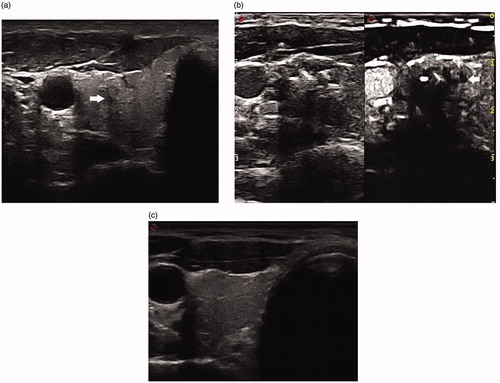Figures & data
Figure 1. (a) A 45-year-old man had a suspicious hypoechoic lesion (arrow) measured 5.3 × 3.7 × 3.0 mm in the right thyroid lobe. (b) A 300-m plane-cut optic fiber was inserted through the introduced needle (arrow head). During the ablation, the typical hyperechoic region (arrow) occurred surrounding the tip of the fiber due to formation of gas.

Table 1. Patients and PTMCs characteristics in the two groups.
Figure 2. (a) Before LA, transverse ultrasound image revealed a hypoechoic nodule (arrow) with an ill-defined border 56.2 mm3 in volume, which was confirmed as a papillary thyroid microcarcinoma. (b) After LA, the necrotic area (arrow) 684.6 mm3 in volume was significantly larger than the target tumor on CEUS. (c) Ultrasound examination showed that the ablated lesion completely disappeared at the last follow up.

Table 2. Size and volume change of the ablated zone in the LA group.
Figure 3. The graph demonstrated recurrence-free survival curves for patients treated with surgery and LA.

Table 3. Complications after surgery versus LA.
Table 4. Treatment response after surgery versus LA.
